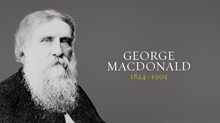The world is now marking the 300th anniversary of the birth of John Wesley with celebrations, conferences, publications, and many other commemorations. (For trivia buffs and sticklers: The actual day of Wesley's birth was June 17 or June 28, 1703, depending on whether you follow the "old style" calendar in use before 1752 or the "new style" calendar used after that year.) But Americans may wonder, What difference did Wesley make to our country? After all, while he served as a parish minister in Savannah, he didn't last two years in the post before incurring the colonists' wrath and before returning to England.
In fact, America has a special claim on the man and his legacy. It was here that Methodism first became a separate denomination—separating from Wesley's beloved Church of England. Wesley reluctantly blessed the separation for a pragmatic reason: so many people were entering the church through Methodist ministry that there weren't enough Anglican priests to serve them the Lord's Supper. So Methodists had to be given the authority to ordain their own ministers.
America changed Methodism, and soon Methodism began returning the favor. In 1800, it was still a fairly small Protestant denomination among many others. By 1900, it had grown be the largest of them all. The small space of a newsletter won't allow more than a brief summary of the changes Wesley and his heirs brought to America, but we can at least begin to tell the story.
Most significantly, Wesley and Methodism joined other evangelistically minded Christians in promoting a faith deeply felt and actively lived. Christianity was no spectator sport for Wesley. From his Oxford "Holy Club" days to the end of his life, he sought to be a True Christian—unlike the many nominal "almost Christians" he saw in the Established church around him. And his deepest desire was to help others do the same.
To Wesley, a True Christian was marked by two inseparable qualities: holiness and happiness.
In his Plain Account of Christian Perfection, Wesley defined holiness not as achieving sinless perfection but as having one's heart fully fixed on God, setting aside all other affections—"perfect love." His teachings on the subject combined the spiritual athleticism of William Law's Serious Call to a Devout and Holy Life, the Moravian emphasis on felt assurance of salvation (which Wesley extended to include sanctification), and the Puritan insistence onminute examination of conscience coupled with sanctified action in all spheres of life.
This emphasis on sanctification became the hallmark of Wesley's movement. He often said that the mission of Methodism was to "spread scriptural holiness throughout the land."
His was no extreme ascetic holiness, however, mortifying the heart as well as the flesh. Rather, Wesley taught that True Christianity fulfilled all of a person's deepest, truest desires, making the Christian a happier, more productive person. When pressed to define "the character of a Methodist," he answered, in a 1742 tract of that title: "God is the joy of [the Methodist's] heart. … He is therefore happy in God, yea, always happy, as having in him 'a well of water springing up into everlasting life', and 'overflowing his soul with peace and joy."
Just as their founder had experienced having his "heart strangely warmed" in 1738 at a meeting on Aldersgate Street, Methodists practiced a religion of joy. Frontier Americans cracked jokes about the "shouting Methodists," but the Wesleyans wore the label as a badge of honor. They felt their own joy was one of the best advertisements for the truth of the message they preached.
When white American Methodists began encountering Africans in the slave South, they found in the feeling, physically expressive traditional spirituality of Africans a natural complement to their own lively faith. Soon many African Americans joyously accepted the gospel through the Methodist witness—though most remained appalled at the hypocrisy and cruelty of so many "Christian" slave masters. Slave Christians expressed the joy of a new, inner spiritual freedom in their conversion testimonies, spirituals, and dancing "shouts."
At the same time, white and black Methodists began mixing at camp meetings and churches (though with some of the restraint that would later manifest as segregation, leading to the birth of the African Methodist Episcopal and African Methodist Episcopal Zion churches). At such meetings, for a season, the two races enjoyed together what white denominational leaders loved to call "melting times" of celebratory fellowship, sometimes shouting, sometimes falling blissfully in the Spirit, always telling the Good News and testifying to its reality in their hearts. Here is one strong root of recent attempts to heal the ugly racial divide in this country's churches.
For Wesley, the impact of True Christianity was never to stop within the body of believers, however blissful its fellowship. From his Holy Club days at Oxford through to the end of his life, he insisted on the importance of works of mercy. He and his fellow Oxford Methodists gave significant portions of their income to succor the poor and spent much time ministering to condemned prisoners (after a lifetime of lavish giving, Wesley died a relatively poor man). Wesley also abhorred slavery, and for at least the early decades of America's involvement in that dark institution, Methodists were among those most firm in their opposition to slavery (their later record was not so sterling—see Don Mathews's Religion in the Old South).
Such crusades as the successful fight to reduce the drunkenness rampant in nineteenth-century America also found significant leadership within Methodism—Women's Christian Temperance Union president Frances Willard is just one example. By the close of the nineteenth century, the Salvation Army, a Wesleyan denomination, was doing more for the poor in America than any other group.
In his landmark book Revivalism and Social Reform, historian Timothy L. Smith has laid forever to rest the old myth that the concern for "souls" and the concern for social reform have never met in American religion. His "Exhibit A"? The reforming efforts of people who identified with the nineteenth-century Wesleyan holiness movement.
This book and Donald Dayton's Discovering an Evangelical Heritage are still well worth reading on this major aspect of Wesleyans' impact in America.
Though Methodism and its holiness and Pentecostal offshoots have not always upheld this heritage of social action, they often have—in spectacular ways. Perhaps the most visible sign of their success in evangelical Wesleyan circles is the holiness and Pentecostal storefront church—a twentieth-century fixture in many inner-city areas from which more "mainstream" churches fled, creating a "donut effect." Those churches often served more than the spiritual needs of their congregations, linking to an array of social ministries.
Wesley and his followers changed the American landscape in many other ways.
They helped democratize America's churches, empowering the laity—male and female, black and white—to carry the gospel across the country. The Salvation Army is the only modern denomination in which ordained leadership comprises over 50 percent women.
Methodists helped pioneer the original "focus on the family," making the Victorian era the heyday of home-based religious instruction.
While maintaining a lively understanding of the Christian's need for grace, Methodists spread Wesley's Arminian emphasis on the place of human will and responsibility in the religious life—touching and changing almost all other Protestant denominations in America.
Wesley read the Church Fathers avidly, seeking to make his movement reflect the purity, simplicity, and communal power of the early church. His followers joined him in this, taking especially the apostolic church of Acts as their model. This emphasis reached its fullest flower when the Pentecostal churches revived the "gifts of the Spirit" enumerated in 1 Corinthians 12.
Wesley's emphasis on the small group—most famously, his disciplined, close-knit "CLASS meetings"—has shaped the landscape of modern American spirituality through "cell groups," Bible studies, and many other small-group modes of fellowship and worship.
Wesley's organizational genius was reflected in the massive growth of the nineteenth-century American Methodist denominational "machine," which met regularly to celebrate its growth in the most precise mathematical terms and to govern its ministry with an organizational acumen that would put many major corporations to shame. Here, perhaps, are the roots of the modern American "megachurch."
Wesley's passion for education—he insisted all his preachers read, and he equipped each of them to sell the books produced by the massive Methodist publishing enterprise—is reflected in many American colleges and universities. This focus on education also transformed the church itself, through the agency of the Sunday School—an institution that owed much of its nineteenth-century dominance and modern shape to such Methodist leaders as John Heyl Vincent, founder of Chautauqua.
Last, but decidedly not least, the richly theological hymns of John's brother Charles, and the later compositions of Wesleyan hymn writer Fanny Crosby, continue to enrich the hymnals of churches far beyond the bounds of Methodism—from Presbyterians to Lutherans.
In these and many other ways, John Wesley changed the United States—and the world. Happy 300th, John! We would be poorer had you not lived.
Chris Armstrong is managing editor of Christian History magazine.
Copyright © 2003 Christianity Today. Click for reprint information.

Support Our Work
Subscribe to CT for less than $4.25/month




























